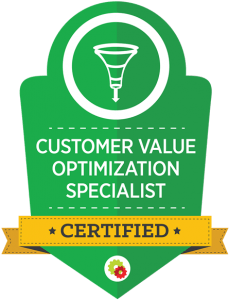How to Use AI Tools to Improve Your SEO Strategy
In today’s digital landscape, having a strong SEO (Search Engine Optimization) strategy is critical to online success. But as search engine algorithms evolve and the competition for visibility increases, businesses are turning to artificial intelligence (AI) tools to optimize their SEO efforts. AI tools can help you automate tasks, analyze data, and gain insights that can take your SEO to the next level. From advanced keyword research to optimizing content and improving technical SEO, AI can provide invaluable assistance for marketers seeking to stay ahead of the competition.
This detailed guide will explore how AI tools can improve your SEO strategy, provide practical steps to integrate these tools into your workflow, and show how AI is reshaping the future of search marketing.
Introduction
SEO is a multifaceted discipline, requiring expertise in keyword research, content optimization, link building, technical auditing, and more. As these tasks grow more complex, relying on traditional manual methods is becoming increasingly time-consuming and less efficient. This is where AI comes in—AI-powered tools use machine learning, natural language processing (NLP), and predictive analytics to streamline your SEO efforts, helping you make data-driven decisions that lead to better results.
AI tools can automate tedious tasks, identify trends and opportunities, and even generate content, allowing SEO professionals to focus on strategy and creative tasks. Let’s dive into the key ways you can leverage AI tools to enhance your SEO strategy.
Why AI is Essential for SEO
AI is transforming the SEO landscape by automating time-consuming tasks, providing deeper insights, and helping marketers create more personalized and optimized content. Here’s why AI is essential for SEO:
- Data-Driven Decision Making: AI tools analyze massive amounts of data and extract actionable insights that help improve keyword targeting, content creation, and user experience.
- Automation of Repetitive Tasks: AI can handle repetitive tasks like keyword tracking, backlink analysis, and technical audits, freeing up time for strategic thinking.
- Improved Content Optimization: AI can help create content that better matches search intent, resulting in higher rankings and better engagement.
- Real-Time Monitoring: AI-powered tools provide real-time updates and alerts, allowing you to respond quickly to algorithm changes, rankings fluctuations, and competitor actions.
How AI Tools Can Improve Your SEO Strategy
AI tools can benefit your SEO efforts in several key areas, including keyword research, content optimization, technical SEO, and more. Let’s explore how you can use AI to enhance each aspect of your SEO strategy.
1. AI-Powered Keyword Research
Keyword research is the foundation of any SEO strategy, but finding the right keywords can be time-consuming and complex. AI tools can help automate this process and provide deeper insights into search intent and keyword trends.
How AI Enhances Keyword Research
- Identifying Keyword Opportunities: AI tools like Ahrefs, SEMrush, and Google’s RankBrain analyze large datasets to identify relevant keywords with high search volume and low competition.
- Understanding Search Intent: AI can help interpret the intent behind search queries, ensuring that you target keywords that align with what users are really looking for (informational, transactional, or navigational intent).
- Predicting Keyword Trends: AI algorithms can analyze historical data to predict which keywords are likely to become more popular, allowing you to stay ahead of the curve.
Popular AI Tools for Keyword Research
- Ahrefs: Known for its comprehensive keyword research capabilities, Ahrefs uses AI to provide keyword difficulty scores, search volume trends, and competitor keyword analysis.
- SEMrush: SEMrush’s AI-driven tools provide in-depth keyword data, including variations, questions, and intent-based suggestions.
- Google Keyword Planner: Google’s AI-backed tool helps marketers discover new keywords, assess competition levels, and get search volume estimates.
Actionable Steps for Using AI in Keyword Research
- Use AI tools to generate a list of high-value keywords by inputting your primary keywords or competitor domains.
- Focus on keywords with lower competition but higher conversion potential.
- Analyze keyword difficulty and select long-tail keywords that match your content’s goals and target audience.
2. Content Creation and Optimization with AI
Creating SEO-friendly content that resonates with both search engines and users can be challenging. AI tools can assist in generating, optimizing, and personalizing content, ensuring it ranks well while satisfying user intent.
How AI Enhances Content Creation
- Automated Content Generation: AI writing tools like GPT-4 and Jasper can create high-quality, SEO-optimized content by analyzing data and generating relevant, well-structured articles.
- Content Optimization for SEO: AI-powered content tools like Clearscope and Surfer SEO provide recommendations for keyword usage, content length, readability, and structure, ensuring your content ranks higher.
- Enhancing User Experience: AI tools analyze user behavior, helping you optimize content for better engagement by tweaking headlines, CTAs, or structure based on performance data.
Popular AI Tools for Content Creation and Optimization
- Jasper: This AI content generator helps create SEO-friendly blog posts, product descriptions, and social media content.
- Surfer SEO: Surfer SEO uses AI to analyze top-ranking pages and provides recommendations for keyword usage, content length, headings, and internal linking.
- Clearscope: This tool helps optimize content by analyzing the top-performing content for your target keywords and offering suggestions for improving relevancy and quality.
Actionable Steps for Using AI in Content Creation
- Use AI-powered tools to generate content ideas and outlines based on your target keywords.
- Write or optimize content based on the SEO recommendations provided by AI tools, ensuring that you’re using keywords naturally and maintaining readability.
- Monitor user behavior and make data-driven adjustments to improve engagement, such as adding more visuals, reformatting sections, or enhancing CTAs.
3. Technical SEO and Site Audits with AI
Technical SEO is a critical aspect of any SEO strategy, and AI tools can help identify and resolve technical issues that may be affecting your website’s performance and rankings.
How AI Improves Technical SEO
- Site Audits: AI tools like Screaming Frog and DeepCrawl automate the process of auditing your website for common technical SEO issues, such as broken links, duplicate content, or missing metadata.
- Page Speed Optimization: Tools like Google PageSpeed Insights use AI to analyze your website’s performance and provide recommendations for improving page load times, which is a crucial ranking factor.
- Mobile Optimization: AI-powered tools assess how mobile-friendly your website is, identifying issues like poor navigation, unoptimized images, or slow loading times on mobile devices.
Popular AI Tools for Technical SEO
- Screaming Frog: A powerful AI-driven tool for performing technical SEO audits, identifying issues such as broken links, duplicate content, and redirect chains.
- DeepCrawl: This tool uses AI to perform comprehensive website audits, helping you identify crawl errors, site architecture issues, and SEO opportunities.
- Google PageSpeed Insights: Backed by AI, this tool assesses your website’s speed and performance on both desktop and mobile devices, offering actionable recommendations.
Actionable Steps for Using AI in Technical SEO
- Regularly perform site audits using AI tools to identify and fix technical issues that may hinder your website’s SEO performance.
- Use AI recommendations to improve your website’s speed and mobile usability, both of which are crucial for rankings and user experience.
- Ensure proper use of structured data and schema markup with AI tools that can detect missing or incorrect tags.
4. AI-Driven Backlink Analysis and Link Building
Backlinks remain a crucial ranking factor, and AI tools can help you build a strong backlink profile by analyzing link opportunities, tracking competitors, and identifying low-quality or toxic links.
How AI Improves Backlink Analysis
- Competitor Backlink Analysis: AI-powered tools like Ahrefs and Majestic allow you to analyze your competitors’ backlink profiles, identifying high-authority sites that could link to your content.
- Toxic Link Identification: AI can quickly identify potentially harmful backlinks that could negatively affect your SEO, enabling you to disavow or remove them.
- Link-Building Suggestions: AI tools suggest websites, blogs, or influencers that are relevant to your industry, helping you build high-quality, authoritative backlinks.
Popular AI Tools for Backlink Analysis
- Ahrefs: This AI-powered tool helps analyze competitor backlinks, track link-building opportunities, and identify toxic links.
- Majestic SEO: Majestic provides detailed insights into your website’s backlink profile, helping you discover new link-building opportunities.
- Monitor Backlinks: This tool uses AI to automatically track your backlinks and alert you to changes or toxic links that need to be addressed.
Actionable Steps for Using AI in Backlink Analysis
- Use AI tools to analyze your competitors’ backlinks and identify high-quality sites where you can pitch guest posts or content collaborations.
- Regularly monitor your backlink profile to detect and disavow low-quality or toxic links that could harm your rankings.
- Leverage AI to discover new link-building opportunities by analyzing industry trends and potential link partners.
5. Voice Search and AI-Powered SEO for the Future
As voice search continues to grow, optimizing your content for voice search queries is becoming increasingly important. AI tools can help you understand how people use voice assistants like Siri, Alexa, and Google Assistant, allowing you to optimize for these types of queries.
How AI Supports Voice Search Optimization
- Long-Tail Keyword Targeting: AI tools can identify conversational long-tail keywords that align with voice search queries.
- Natural Language Processing (NLP): AI tools analyze how users phrase voice search queries, helping you create content that mirrors conversational language.
- Structured Data for Voice Search: AI tools can help you implement schema markup and structured data, making it easier for search engines to pull information for voice search results.
Popular AI Tools for Voice Search Optimization
- Google RankBrain: Google’s AI system helps analyze voice search queries, making it essential for optimizing your content for voice SEO.
- AnswerThePublic: This tool provides insights into the types of questions users ask via voice search, allowing you to create targeted content.
- Frase: This AI-powered tool uses NLP to help optimize content for both text and voice search, ensuring it aligns with how users speak.
Actionable Steps for Using AI in Voice Search Optimization
- Use AI to identify long-tail, conversational keywords that people might use when searching via voice.
- Optimize your content to answer direct questions, using clear and concise language that mimics natural speech patterns.
- Implement structured data to increase the likelihood of your content being featured in voice search results, such as Google’s featured snippets.
Common Mistakes to Avoid When Using AI for SEO
While AI tools can significantly enhance your SEO efforts, it’s essential to use them wisely and avoid common pitfalls:
- Over-Dependence on Automation: AI tools are powerful, but they should complement—not replace—human judgment. Use AI to enhance decision-making, not to run your entire strategy autonomously.
- Neglecting Content Quality: AI tools can help generate and optimize content, but don’t sacrifice quality for quantity. Ensure your content is valuable, engaging, and aligned with your brand voice.
- Ignoring User Experience: While AI tools can optimize technical aspects of your site, user experience should remain a priority. Always consider how changes impact the overall usability of your site.
FAQs
What are AI tools in SEO?
AI tools in SEO use machine learning, natural language processing, and other advanced technologies to automate tasks like keyword research, content optimization, site auditing, and backlink analysis.
How do AI tools improve SEO strategies?
AI tools improve SEO strategies by providing deeper insights into keyword opportunities, automating technical audits, generating optimized content, and predicting trends that can inform decision-making.
Can AI tools replace human SEO efforts?
No, AI tools should complement human SEO efforts. While they automate repetitive tasks and provide data-driven insights, human creativity, strategy, and judgment are still essential for SEO success.
Which AI tools are best for keyword research?
Popular AI-powered keyword research tools include Ahrefs, SEMrush, and Google Keyword Planner, which help identify high-value keywords, search intent, and trends.
How can AI help with content creation?
AI tools like Jasper and Surfer SEO help generate and optimize content by analyzing data and offering suggestions for keyword usage, structure, readability, and search intent alignment.
How does AI improve technical SEO?
AI improves technical SEO by automating site audits, identifying issues like broken links or slow load times, and providing actionable recommendations for improving site performance.
Conclusion
AI tools are revolutionizing the way businesses approach SEO, offering advanced solutions to optimize keyword research, content creation, technical audits, and more. By integrating AI into your SEO strategy, you can automate time-consuming tasks, gain valuable insights, and make data-driven decisions that lead to better rankings and higher engagement. As search engines continue to evolve, using AI tools will help you stay ahead of the competition, improve user experience, and drive sustainable growth. Start leveraging AI tools today to take your SEO strategy to new heights.











